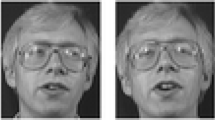Abstract
“Fuzzy set” theory can effectively manage the vagueness and ambiguity of the images being degraded by poor illumination component. In this study, we augment mechanism of “fuzzy set” into the algorithm design, and propose fuzzy local mean discriminant analysis (FLMDA) for dimensionality reduction. In FLMDA, the nearest neighborhoods are selected as the local patches. On each local patch, FLMDA redefines the fuzzy local class-means and then constructs the fuzzy local between-class and within-class scatters, respectively. By maximizing the difference of fuzzy local between-class scatter and fuzzy local within-class scatter, FLMDA finds the optimal transformed subspace, in which the local neighbor relationship is preserved while at the same time the compactness and separability are enhanced. The experimental results on the AR face database, Yale face database, UCI Wine dataset and PolyU palmprint database show that FLMDA outperforms the state-of-the-art algorithms.











Similar content being viewed by others
Explore related subjects
Discover the latest articles, news and stories from top researchers in related subjects.References
Belhumeur P, Hespanha J, Kriegman D (1997) Eigenfaces vs. fisherfaces: recognition using class specific linear projection. IEEE Trans Pattern Anal Mach Intell 19(7):711–720
Lai Z, Xu Y, Chen Q, Yang J, Zhang D (2014) Multilinear sparse principal component analysis. IEEE Trans Neural Netw Learn Syst 25(10):1942–1950
Tenenbaum J, deSilva V, Langford J (2000) A global geometric framework for nonlinear dimensionality reduction. Science 290:2319–2323
Roweis S, Saul L (2000) Nonlinear dimensionality reduction by locally linear embedding. Science 290:2323–2326
Zhang Z, Zha H (2004) Paincipal manifolds and nonlinear dimensionality reduction via tangent space alignmen. SIAM J Sci Comput 26(1):313–338
Belkin M, Niyogi P (2003) Laplacian eigenmaps for dimensionality reduction and data representation. Neural Comput 15(6):1373–1396
He X, Niyogi P (2003) Locality Preserving Projections. In: Proceedings of 16th conference neural information processing systems
He X, Yan S, Hu Y, Niyogi P, Zhang H (2005) Face recognition using Laplacianfaces. IEEE Trans Pattern Anal Mach Intell 27(3):328–340
Yang J, Zhang D, Yang J, Niu B (2007) Globally maximizing, locally minimizing: unsupervised discriminant projection with applications to face and palm biometrics. IEEE Trans Pattern Anal Mach Intell 29(4):650–664
Lai Z, Jin Z, Yang J (2011) Sparse two dimensional local discriminant projections for feature extraction. Neurocomputing 74(4):629–637
Xie S, Yang L, Yang J, Zhou G, Xiang Y (2012) Time-frequency approach to underdetermined blind source separation. IEEE Trans Neural Netw Learn Syst 23(2):306–316
He ZS, Cichocki A, Xie SL, Choi K (2010) Detecting the number of clusters in n-way probabilistic clustering. IEEE Trans Pattern Anal Mach Intell 32(11):2006–2021
He Z, Xie S, Zdunek R, Zhou Guoxu, Cichocki Andrzej (2011) Symmetric nonnegative matrix factorization: algorithms and applications to probabilistic clustering. IEEE Trans Neural Netw 22(12):2117–2131
Zadeh L (1965) Fuzzy sets. Inf Control 8:338–353
Agrawal A, Choubey A, Nagwanshi K K (2011) Development of adaptive fuzzy based Image Filtering techniques for efficient Noise Reduction in Medical Images. Published in Aneesh Agrawal et al,/(ijcsit) international journal of computer science and Information technologies 2(4): 1457–1461
Kerre EE, Nachtegael M (eds) (2013) Fuzzy techniques in image processing, vol 52. Physica, Springer
Van De Ville D, Nachtegael M, Van der Weken D, Kerre EE, Philips W, Lemahieu I (2003) Noise reduction by fuzzy image filtering. IEEE Trans Fuzzy Syst 11(4):429–436
Schulte S, De Witte V, Nachtegael M, Van der Weken D, Kerre EE (2007) Fuzzy random impulse noise reduction method. Fuzzy Sets Syst 158(3):270–283
Kwan HK, Cai Y (2002, August) Fuzzy filters for image filtering. In Circuits and Systems, 2002. MWSCAS-2002. The 2002 45th Midwest Symposium on 3:III-672
Othman A, Tizhoosh HR, Khalvati F (2014) EFIS–evolving fuzzy image segmentation. IEEE Trans Fuzzy Syst 22(1):72–82
Oke OA, Adedeji TO, Alade OM, Adewusi EA (2012) Fuzzy kc-means clustering algorithm for medical image segmentation. J Inf Eng Appl 2(6):21–32
Huntsherger TL, Jacobs CL, Cannon RL (1985) Iterative fuzzy image segmentation. Pattern Recognit 18(2):131–138
Moghaddamzadeh A, Bourbakis N (1994, June) A fuzzy technique for image segmentation of color images. In: Proceedings of the Third IEEE Conference on Fuzzy Systems, 1994. IEEE World Congress on Computational Intelligence, pp 83-88
Pham DL, Prince JL (1999) An adaptive fuzzy C-means algorithm for image segmentation in the presence of intensity inhomogeneities. Pattern Recognit Lett 20(1):57–68
Perez-Ornelas F, Mendoza O, Melin P, Castro JR, Rodriguez-Diaz A, Castillo O (2015) Fuzzy Index to evaluate edge detection in digital images. PLoS One 10(6):e0131161
Verma OP, Hanmandlu M, Sultania AK, Parihar AS (2013) A novel fuzzy system for edge detection in noisy image using bacterial foraging. Multidimens Syst Signal Process 24(1):181–198
Aborisade DO (2011) Novel fuzzy logic based edge detection technique. Int J Adv Sci Technol 29:75–82
Biswas R, Sil J (2012) An improved canny edge detection algorithm based on type-2 fuzzy sets. Procedia Technol 4:820–824
Verma OP, Gumber R (2013) Simple fuzzy rule based edge detection. J Inf Process Syst 9(4):575–591
Law T, Itoh H, Seki H (1996) Image filtering, edge detection, and edge tracing using fuzzy reasoning. IEEE Trans Pattern Anal Mach Intell 18(5):481–491
Pal SK, King R (1983) On edge detection of X-ray images using fuzzy sets. IEEE Trans Pattern Anal Mach Intell 1:69–77
Kuo YH, Lee CS, Liu CC (1997, July) A new fuzzy edge detection method for image enhancement. In: Proceedings of the 6th IEEE International conference on Fuzzy systems 2: 1069–1074
Tizhoosh HR (2002) Fast fuzzy edge detection. In: Proceedings of the Annual Meeting of the North American Fuzzy Information Processing Society, IEEE – NAFIPS 239-242
Becerikli Y, Karan TM (2005) A new fuzzy approach for edge detection. computational intelligence and bioinspired systems. LNCS, Springer Verlag, Berlin, pp 943–951
Ganji MF, Abadeh MS (2011) A fuzzy classification system based on ant colony optimization for diabetes disease diagnosis. Expert Syst Appl 38(12):14650–14659
Ammari FT, Lu J, Aburrous M (2014) Intelligent banking XML encryption using effective fuzzy classification. Elsevier, London, pp 593–623
Aburrous M, Khelifi A (2013, March) Phishing detection plug-in toolbar using intelligent Fuzzy-classification mining techniques. In The international conference on soft computing and software engineering [SCSE’13], San Francisco State University, San Francisco, California, USA
Keller J (1985) A fuzzy k-nearest neighbor algorithm. IEEE Trans Syst Man Cybern 15(4):580–585
Kw K, Pedry W (2005) Face recognition using a fuzzy fisher classifier. Pattern Recognit 38(10):1717–1732
James EA, Annadurai S (2012) An efficient implementation of weighted Fuzzy Fisherface Algorithm for face recognition using wavelet transform. J Comput Sci 8(1):6
Khoukhi A, Ahmed SF (2011) A genetically modified fuzzy linear discriminant analysis for face recognition. J Frankl Inst 348(10):2701–2717
Taghlidabad M, Salehi N, Kasaei S (2011) Fuzzy regularized linear discriminant analysis for face recognition. In: Proceedings of SPIE8349, fourth international conference on machine vision (ICMV 2011): machine vision, image processing, and pattern analysis, 83491N
Li W, Ruan Q, Wan J (2013) Fuzzy nearest feature line-based manifold embedding for facial expression recognition. J Inf Sci Eng 29(2):329–346
Ye J, Jin Z (2013) Non-negative matrix factorisation based on fuzzy K nearest neighbour graph and its applications. IET Comput Vis 7(5):346–353
Wan M, Yang G, Lai Z, Jin Z (2011) Feature extraction based on fuzzy local discriminant embedding with applications to face recognition. IET Comput Vis 5(5):301–308
Zhao C, Lai Z, Liu C, Gu X, Qian J (2012) Fuzzy local maximal marginal embedding for feature extraction. Soft Comput 16(1):77–87
Yang W, Yan X, Zhang L, Sun C (2010) Feature extraction based on fuzzy 2DLDA. Neurocomputing 73:1556–1561
Zheng Y, Yang J, Wu X, Li Y (2007) A new two-dimensional linear discriminant analysis algorithm based on fuzzy set theory. Eng Sci 9(2):49–53
Wu X, Zhou J (2013) Fuzzy two-dimensional local graph embedding discriminant analysis (F2DLGEDA) with its application to face and palm biometrics. Neural Comput Appl 23(1):201–207
Ye J, Janardan R, Li Q (2004) Two-dimensional linear discriminant analysis. Adv Neural Inf Process Syst 17:1569–1576
Li H, Jiang T, Zhang K (2006) Efficient and robust feature extraction by maximum margin criterion. IEEE Trans Neural Netw 17(1):157–165
Martinez A, Benavente R (1998) The AR face database. CVC Technical Report #24
Martinez A, Benavente R (2006) The AR face database. http://rvl1.ecn.purdue.edu/aleix/~aleix_face_DB.html
Raghavan V, Bollmann P, Jung GS (1989) A critical investigation of recall and precision as measures of retrieval system performance. ACM Trans Inf Syst 7(3):205–229
Zhang D (2004) Palmprint authentication. Kluwer Academic, Dordrecht
Acknowledgments
This work was partially supported by the National Nature Science Foundation of China (Grant Nos. 61305036, 61322306, 61333013, and 61273192), the China Postdoctoral Science Foundation funded project (Grant 2014M560657 and 2015T80898), and Shenzhen Council for Scientific and Technological Innovation (Grant JCYJ20150324141711637), Scientific Funds approved in 2013 for Higher Level Talents by Guangdong Provincial universities and Project supported by GDHVPS 2014.
Author information
Authors and Affiliations
Corresponding author
Rights and permissions
About this article
Cite this article
Xu, J., Gu, Z. & Xie, K. Fuzzy Local Mean Discriminant Analysis for Dimensionality Reduction. Neural Process Lett 44, 701–718 (2016). https://doi.org/10.1007/s11063-015-9489-3
Published:
Issue Date:
DOI: https://doi.org/10.1007/s11063-015-9489-3




